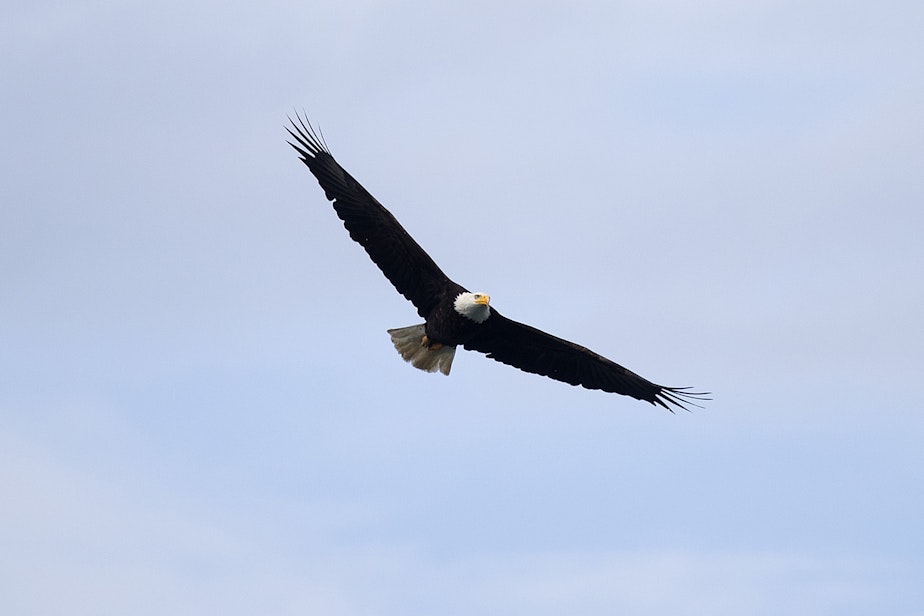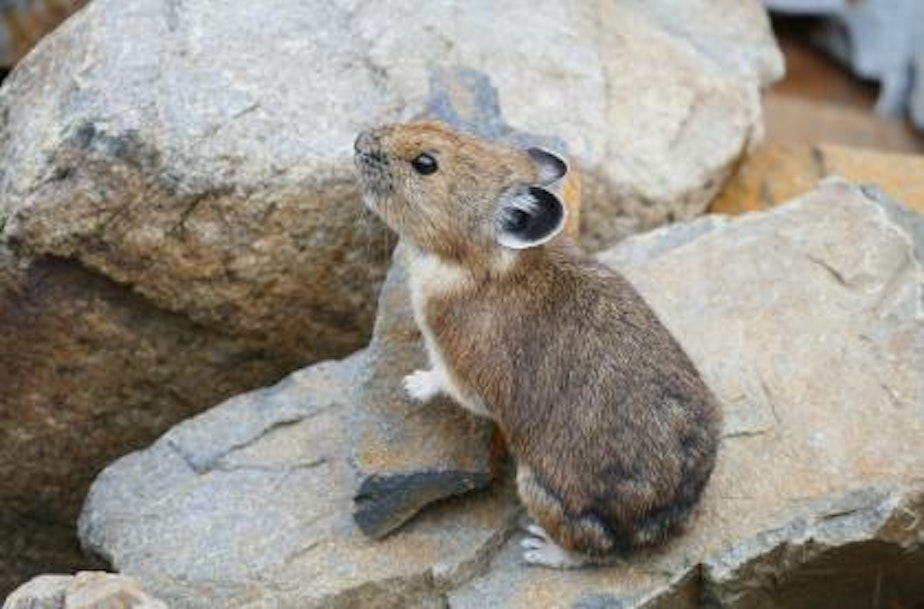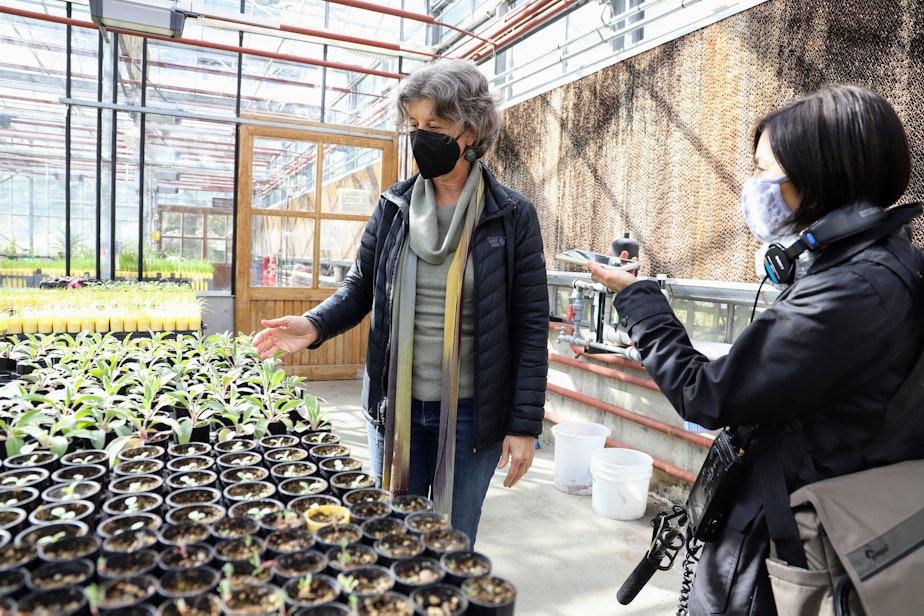8 tourism ideas that teach about Washington’s fragile wonders: Travel For Good

From wineries adapting to climate change, to rivers recovering from dam removal projects, to mountaintop scavenger hunts that gather data on threatened species – these trip ideas help us ponder human impacts on the environment.
_________________________________________________
T
he weather’s getting warmer, Covid restrictions are easing, and tourist destinations throughout Washington are preparing to welcome summer visitors.
Travel looks different in the pandemic era, according to Michelle Thana with State of Washington Tourism, a nonprofit marketing group. Outdoor recreation areas – like state and national parks, beaches, and islands – are seeing a huge influx of visitors.
“Some of these areas, like the Olympic Peninsula, have already seen visitation recover to greater than 2019 levels,” Thana said.
But the state of the pandemic remains volatile, and many people might be hesitant to plan travel. While Washington saw more visitors last year than in the pandemic’s first year, the number of tourists was still 13% fewer than pre-pandemic, and tourism revenue was down 19% from 2019, according to new research published by Tourism Economics.
Sponsored
Those who are ready to resume travel are seeking experiences that leave them with more than a pretty post on Instagram. They increasingly want trips with purpose, Thana said. They want to learn about how human activities affect the natural world, and they want to help give back where they can.
So KUOW is spotlighting local travel ideas that teach about our state’s natural wonders and contribute to conservation efforts.
Most of the locations on this list are outdoors. They’re all currently open, with some Covid restrictions in place. Check out all eight travel ideas below. And tune in to KUOW to hear our dispatches from each location.
Want to share your social good travel ideas with us? Send an email to zhamid@kuow.org. We might feature your submission in future stories!
_________________________________________________
Sponsored

The Olympic National Park attracts a steady flow of visitors to Washington’s western peninsula. The area’s well-known spots – like the Hoh Rainforest, one of the largest temperate rainforests in the country – tend to overshadow lesser-known attractions. Along the Elwha River, for example, recent dam removal projects have transformed swaths of the riverbank. The forest is reclaiming areas where concrete structures once stood, and salmon now nest in new channels carved by the river.
Local resident and biologist Carolyn Wilcox leads groups of adventurers into the park and along the Elwha for her ecotourism company Experience Olympic.
“The Elwha has regional fame due to the amazing restoration and comeback of fish and ecosystem services,” Wilcox said. But, she added, “first-time visitors don't hear much about it.”
Sponsored
Read more about the restored Elwha River, 'hidden gem' of the Olympic Peninsula.
2) Wine Country: Tour vineyards adapting to a warming planet

Washington state is the second-largest wine producer in the U.S., behind California. Many vineyards are adapting their farming practices to make grape crops more resilient in the face of a changing climate.
Sponsored
At Two Mountain Winery in the town of Zillah, east of the Cascade Mountains, vineyard manager and co-owner Patrick Rawn is one of a handful of Washington growers with a new sustainability certification from the state agency that oversees this industry. One of Rawn’s latest experiments involves allowing mustard grasses to grow under his grape vines.
In the past, he told KUOW, he’d mow down these grasses, but he hopes that by letting them flourish, they’ll keep pests away from his grape buds. The grasses might also keep the roots of his vines cooler, to protect against extreme temperature swings. Last summer’s record-breaking heatwave stunted Rawn’s harvest by 20%, he said.
Read more about how the state's vineyards are preparing for climate change.
3) Northwest Washington: See how a local tribe helps manage a young state park
Sponsored

Sponsored
At different points in its history, the Kukutali Preserve was slated to become a summer resort and even a nuclear power plant. But those plans didn’t come to pass. Instead a unique partnership now safeguards the area for conservation and public use. It opened to visitors as one of the state’s newest parks in 2014.
Located on the Swinomish reservation, Kukutali Preserve is technically part of Deception Pass State Park. According to the Swinomish Tribe, it’s the first park in the country to be co-owned and managed by a federally recognized Indian tribe and a state government. The park’s logo depicts a traditional hand tool (a cattail mat creaser, used by tribal members to make cattail mats for temporary shelter or bedding) adorned with a two-headed bird, representing the partnership between the state parks department and the tribe.
Visitors can walk the preserve’s two miles of trails and explore its southern beaches -- just be aware that the trail connecting Fidalgo Island with the main part of the preserve on Kiket Island is underwater at high tide.
Read more about how the Swinomish Tribe helped save this land and turn it into a park.
4) Cascade Mountains: Search for real-life Pokémon on a mountainside

The American Pika, sometimes likened to Pokémon's Pikachu, is a furry member of the rabbit family that’s about the size of a baked potato. They rely on cold temperatures, snowpack and meadows of fresh flowers – and they’re extremely vulnerable to climate change.
For the last few years scientists have encouraged people in Washington state to document pika encounters. Local pika researchers say citizen scientists are actually providing most of the data on pikas in the wild. But they still need help. The state wants a clearer picture on where exactly pikas live and how many are out there, according to Taylor Cotten with the Washington Department of Fish and Wildlife. With more data on pikas, scientists can better determine how they’re faring with rising temperatures and shrinking snow fields. Despite the rugged habitat, hikers cross paths with pikas regularly and may not realize it.
One of the best-known habitats for pikas is the Goat Rocks Wilderness, a popular hiking destination in the Cascade Mountains, south of Mount Rainier. Hikers can play citizen scientist on their next outing by listening and looking for pika, then documenting it in an app used by wildlife researchers.
Read more about pikas and how to find them while hiking.
5) Seattle: Unlock the secrets of the mysterious Miller Seed Vault

Seattle is home to the largest seed collection in the Pacific Northwest: the Miller Seed Vault. It’s tucked away in a small building, surrounded by public gardens, on the edge of University of Washington campus. The vault holds seeds from more than 100 species of rare native plants from across the state. The seeds are used for research and restoration work.
“It’s kind of a Noah’s Ark,” says Wendy Gibble, who manages the Washington Rare Plant Care and Conservation program this vault is a part of.
Stepping inside the vault is like walking into a restaurant freezer – it’s cold and clean, and there’s a constant hum of the climate control system that protects the seeds from the world outside. You might see volunteers hunching over a desk, where they clean, count and sort seeds. They set aside half of the seed samples to send to the National Laboratory for Genetic Resources Preservation in Fort Collins, Colorado, part of the U.S. Department of Agriculture and the largest seed bank in the country.
Read more about what's inside the Miller Seed Vault.
6) North Bend: Visit the source of Seattle’s drinking water

The Cedar River Watershed has been the largest source of drinking water for the greater Seattle region since 1901. Today, 1.5 million people rely on the area for water to drink, eat, cook and bathe. The watershed is located about 35 miles east of the city. It covers a little over 90,000 acres and includes the popular Rattlesnake Lake Recreation area.
A watershed education center opened in 2001 to teach visitors about where their fresh water comes from. Near the center is an elevated viewing area that offers a sweeping vantage of the surrounding forest. Most of the vast swath of forest that makes up the watershed area is off-limits to the general public. (The city of Seattle, which owns and manages the area, does this to keep the drinking water supply clean and safe.) Treaty rights allow the Muckleshoot Indian Tribe special access to most of the watershed land. Members of the tribe can hunt, gather berries, and practice other cultural traditions on the property.
Read more about the forest where Seattle gets its water.
7) Issaquah: Hang out with growing salmon, some of this town’s most famous residents

Salmon are an important part of culture and nature in Washington state. But humans have polluted and destroyed much of their watery habitats. The Issaquah Salmon Hatchery, just a half-hour drive from downtown Seattle, is one of many hatcheries in the state that aim to boost local salmon populations.
Though there’s debate among scientists and conservationists about hatcheries, the facility in Issaquah is home to 5 million fish (mostly Chinook and coho salmon) for much of the year, and it draws thousands of visitors to this suburban downtown. The fish live in a series of inground-concrete pools on the property. In the spring, the hatchery releases its larger salmon into Issaquah Creek, which runs through the property. If they survive in the wild, they’ll return to the creek in a few years to spawn.
Fall is the busy season – there’s lots of fish activity on the property, and there’s even a salmon festival here in October – but the hatchery is open all year too. Visitors can learn about the delicate lifecycle of salmon and explore the gardens and art exhibits on the hatchery grounds.
Read more about Issaquah's famous fish.
8) Various Locations: Hit the trails with the Disabled Hikers Guide

Syren Nagakyrie is an avid hiker. They also have multiple disabilities and chronic illnesses, and they say they’ve felt excluded from outdoor recreation for much of their life. So, in 2018, Nagakyrie set out to document trails and natural attractions they say are truly accessible for people with a variety of conditions -- physical, psychological, developmental, intellectual. Nagakyrie founded Disabled Hikers, a nonprofit organization and guide that highlights dozens of accessible trails across the Pacific Northwest, California and even parts of the Midwest.
“The entire length of the trail, I need to know: the surface and how wide the trail is, if there’s any sharp drop-offs, the elevation, the grade, the cross-slope,” Nagakyrie said, ticking through the typical list of things to consider. “Will there be any confusing intersections or where I may need to navigate something? Will there be benches along the way?”
Nagakyrie’s ratings also include clear directions for getting to a trail, amenities available at the trailhead, and whether visitors will have to navigate breaks in the trail, too. They said that this information is rarely found online, yet they and many other hikers with disabilities require it to pre-plan hiking trips.
Read more about these honest trail reviews for people with disabilities.




